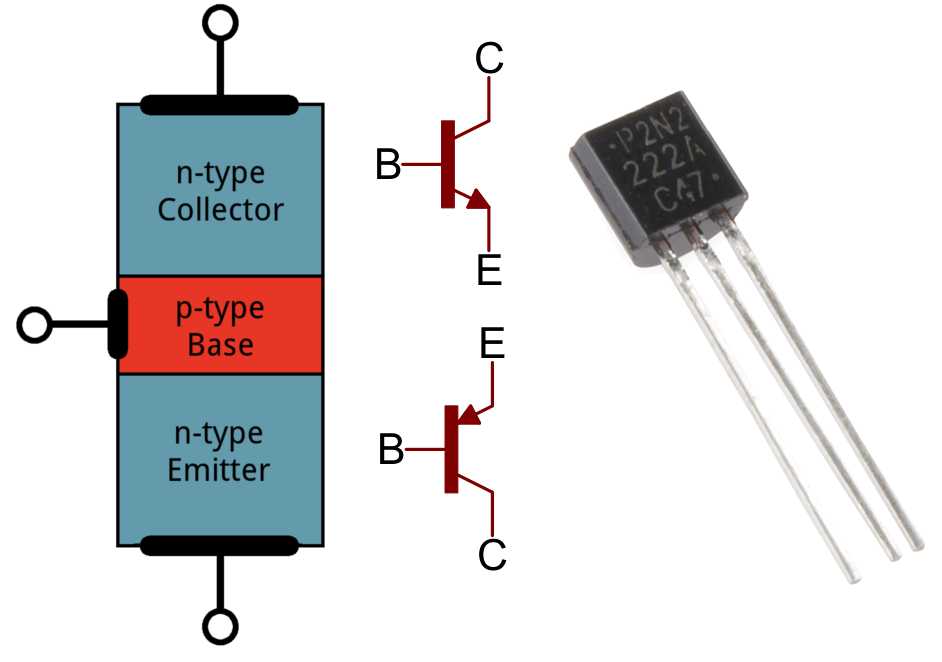
Therefore if a transistor has a Beta value of 50, then for every 50 electrons flowing between the emitter-collector terminals one electron will flow from the base terminal. Beta values normally range between 20 and 200 for most general purpose transistors. The three types of configurations are Common Base, Common Emitter and Common.


Using these 3 terminals the transistor can be connected in a circuit with one terminal common to both input and output in three different possible configurations. NPN transistors are good amplifying devices when the Beta value is large. Any transistor has three terminals, the emitter, the base, and the collector. The current gain of the transistor from the Collector terminal to the Base terminal is signified by Beta, ( β ). The current gain of the transistor from the Collector terminal to the Emitter terminal, Ic/Ie, is a function of the electrons diffusing across the junction. The main current conduction through the emitter and the collector terminals is controlled through the base terminal. The ratio of the collector current to the emitter current is called Alpha (α). Then, PNP transistors use a small base current and a negative base voltage to control a much larger emitter-collector current. Since the physical construction of the transistor determines the electrical relationship between these three currents, (Ib), (Ic) and (Ie), any small change in the base current ( Ib ), will result in a much larger change in the collector current ( Ic ). If the collector, emitter, and base of an NPN transistor are shorted together as shown in figure 5.2a, the diffusion process described earlier for diodes. Note: “Ic” is the current flowing into the collector terminal, “Ib” is the current flowing into the base terminal and “Ie” is the current flowing out of the emitter terminal. The current flowing out of the transistor must be equal to the currents flowing into the transistor as the emitter current is given as (c) If V 0.710 V, Ic 275 A, and I 2.5 A, find the values of Is, BF, and BR for the transistor if aR 0.53. Now the base terminal works as input, and the collector-emitter region serves as the output. Each of these three circuit configurations has its own characteristics curve. The three types of transistor circuit configurations are: Common Emitter Transistor Common Base Transistor Common Collector Transistor (emitter follower). A nother way to display a NPN Transistor is shown in Figure 2 below. Three configurations of the transistor are based on the connection of the transistor terminal.

The Base terminal is always positive with respect to the Emitter. The voltage between the Base and Emitter ( V BE ), is positive at the Base and negative at the Emitter. \): NPN Transistor schematic.įor a bipolar NPN transistor to conduct the Collector is always more positive with respect to both the Base and the Emitter.


 0 kommentar(er)
0 kommentar(er)
